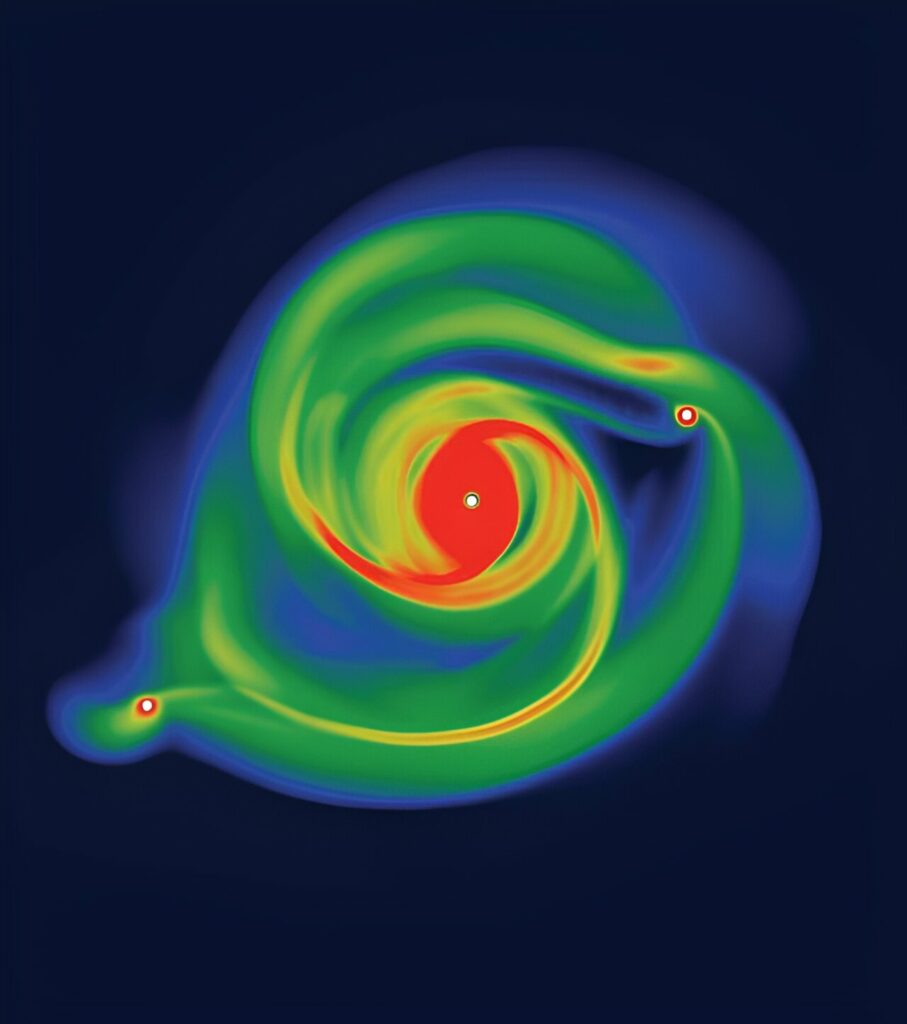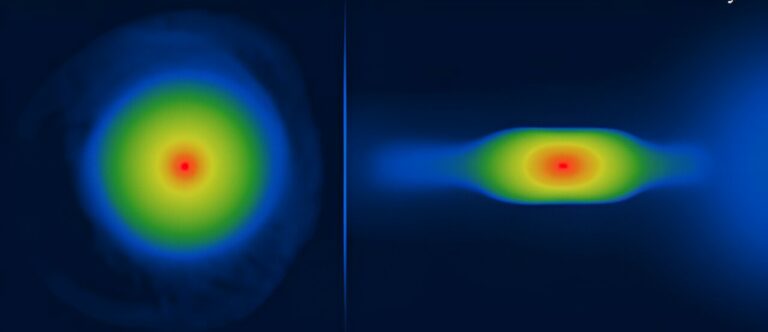Recent Study Reveals Young Planets Exhibit Flattened Structures Instead of Spherical Shapes
Astrophysicists from the University of Central Lancashire (UCLan) have made a significant discovery regarding the shape of planets. Contrary to previous beliefs that planets are spherical, the researchers found that newly formed planets have flattened shapes similar to smarties. This finding has been accepted for publication in Astronomy & Astrophysics Letters and can currently be accessed on the arXiv preprint server.
The team, based at UCLan’s Jeremiah Horrocks Institute for Mathematics, Physics and Astronomy, utilized computer simulations to model the formation of planets. They focused on the theory of disk-instability, which suggests that protoplanets form rapidly from the fragmentation of dense gas disks revolving around young stars.
By employing this approach, the researchers were able to determine the properties of planets, compare them with observations, and investigate the formation mechanism of gas giant planets. They particularly concentrated on studying the shapes of young planets and how they grow to become gas giants, potentially surpassing the size of Jupiter. Additionally, they examined the properties of planets forming under various physical conditions, including ambient temperature and gas density.
Leading the research was Dr. Adam Fenton, a recently graduated Ph.D. student. He emphasized the significance of the study, stating that despite the discovery of numerous exoplanets in the past few decades, their formation process remains largely unexplained.
There are two proposed mechanisms for the formation of planets: ‘core accretion’ and disk-instability. Core accretion involves the gradual growth of dust particles that eventually stick together to form larger objects over long periods of time. On the other hand, disk-instability suggests that planets can form quickly by the breaking up of protostellar disks around young stars. This theory is particularly interesting as it can explain certain observations of exoplanets forming at large distances from their host star.
The computational project undertaken to study this phenomenon was highly demanding, requiring an extensive amount of CPU hours on the UK’s DiRAC High Performance Computing Facility. However, the results obtained were truly remarkable and justified the effort put into the project.

Dr. Dimitris Stamatellos, a Reader in Astrophysics at UCLan and co-investigator, expressed that their team has been studying planet formation for a considerable amount of time. However, they had never considered examining the shape of the planets as they form in simulations. Previously, it was always assumed that these planets were spherical.
To their surprise, the team discovered that the planets actually take the form of oblate spheroids, similar to smarties. This observational confirmation of the flattened shape of young planets could potentially provide answers to the critical question of how planets form. It also suggests that the disk-instability model, which is currently less favored, may be more accurate than the standard planet formation theory of core accretion.
Furthermore, the researchers found that new planets primarily grow as material falls onto them from their poles, rather than their equators. These findings have significant implications for observing young planets, as they indicate that the appearance of planets through a telescope depends on the viewing angle. Understanding the planet formation mechanism relies on such observations of young planets.
The team plans to further investigate this discovery by developing improved computational models. These models will explore how the shape of these planets is influenced by their environment during formation. Additionally, they aim to determine the chemical composition of these planets for future comparisons with observations from the James Webb Space Telescope (JWST).
In recent years, advancements in observing facilities like the Atacama Large Millimeter Array (ALMA) and the Very Large Telescope (VLT) have made it possible to observe young planets.
This article is republished from PhysORG under a Creative Commons license. Read the original article.
Do not forget to share your opinion with us to provide you with the best posts !





0 Comments